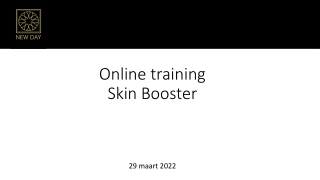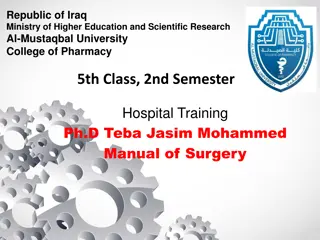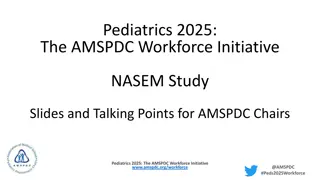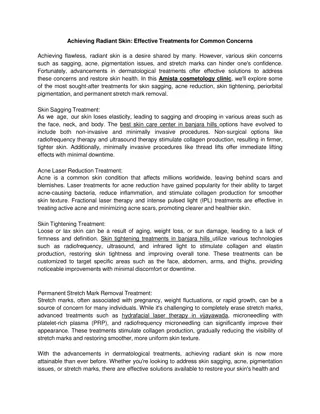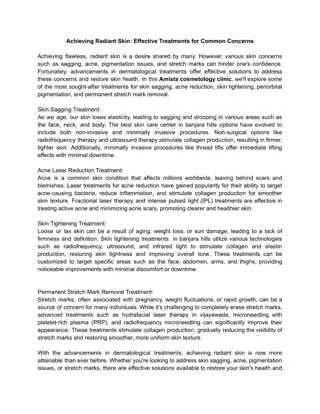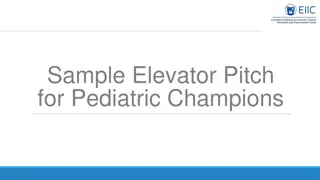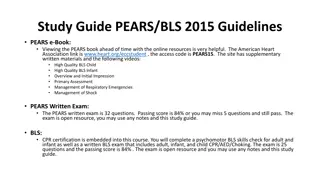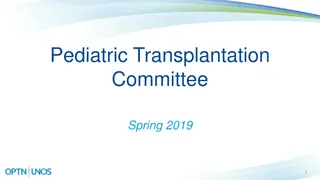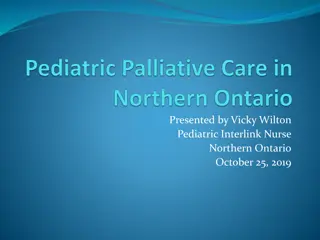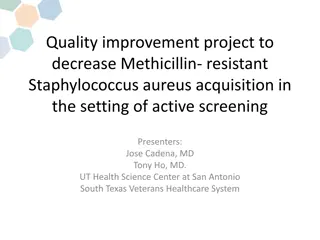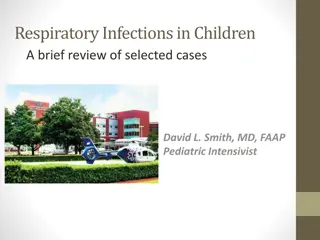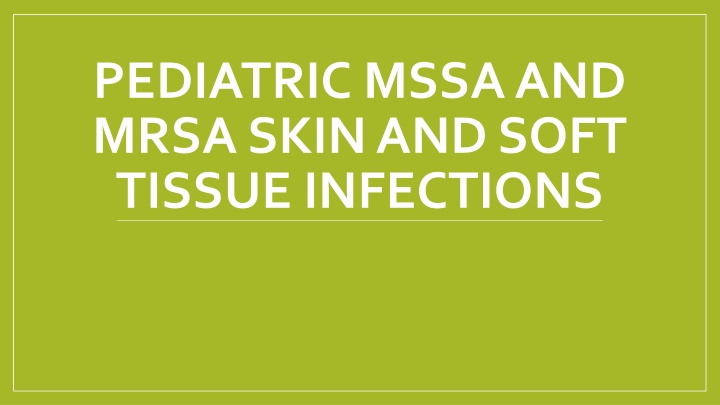
Pediatric MSSA and MRSA Skin Infections Overview
Staphylococcus aureus is a common cause of skin infections. MRSA and MSSA strains are distinguished by antibiotic resistance. Recurrence in pediatric MRSA cases can be as high as 28%, with household decolonization shown to be effective in prevention. Adjuvant antibiotics may improve cure rates and reduce recurrence risks.
Download Presentation

Please find below an Image/Link to download the presentation.
The content on the website is provided AS IS for your information and personal use only. It may not be sold, licensed, or shared on other websites without obtaining consent from the author. If you encounter any issues during the download, it is possible that the publisher has removed the file from their server.
You are allowed to download the files provided on this website for personal or commercial use, subject to the condition that they are used lawfully. All files are the property of their respective owners.
The content on the website is provided AS IS for your information and personal use only. It may not be sold, licensed, or shared on other websites without obtaining consent from the author.
E N D
Presentation Transcript
PEDIATRIC MSSA AND MRSA SKIN AND SOFT TISSUE INFECTIONS
Brief History Staphylococcus aureus is a commensal human pathogen that is a common cause of skin and soft tissue infections as well as other more serious infections1,2 S. aureus strains that are resistant to penicillin-based antibiotics are called MRSA (methicillin-resistant S. aureus), and strains that are methicillin susceptible are called MSSA (methicillin-sensitive S. aureus)1,2 MRSA emerged as a community acquired pathogen in the mid 1990s, and in the early 20thcentury infections rates with MRSA increased drastically 3
Gutierrez K, Halpern MS, Sarnquist C, Soni S, Arroyo AC, Maldonado Y. Staphylococcal infections in children, California, USA, 1985-2009. Emerg Infect Dis. 2013 Jan;19(1):10-20; quiz 185. doi: 10.3201/eid1901.111740. PMID: 23260060; PMCID: PMC3557972.
Ten most common all-listed reasons for pediatric ED visits by body system, FY 2015 McDermott KW (IBM Watson Health), Stocks C (AHRQ), Freeman WJ (AHRQ). Overview of Pediatric Emergency Department Visits, 2015. HCUP Statistical Brief #242. August 2018. Agency for Healthcare Research and Quality, Rockville, MD. www.hcup-us.ahrq.gov/reports/statbriefs/sb242-Pediatric-ED-Visits-2015.pdf.
Current Guidelines from the Infectious Disease Society of America
Recurrence and Colonization Recurrence is a major problem with skin and soft tissue infections from MRSA One study having found recurrence to be as high as 28% in pediatric population at 3-month mark 9 While the ID society also has guidelines on treating recurrent skin and soft tissue infections 8, they tend to be vague, are rated as having weak supportive evidence A study of pediatric ED providers showed wide variability in when they chose to provide adjuvant treatment 10
However, More Recent Studies Show Household decolonization as effective in preventing recurrence in pediatric population Large review article found that MRSA cases tend to cluster in households and the family members be colonized with same strand of MRSA as patient While studies of inviduals undergoing decolonization did not show significance, the study of household decolonization did 15, 16 Adjuvant antibiotics being associated with: Higher cure rates 13, 14 Reduced risk of recurrence 11, 12, 13
Creech CB, Al-Zubeidi DN, Fritz SA. Prevention of Recurrent Staphylococcal Skin Infections. Infect Dis Clin North Am. 2015 Sep;29(3):429-64. doi: 10.1016/j.idc.2015.05.007. PMID: 26311356; PMCID: PMC4552962.
12. Daum, Robert S., et al. "A placebo-controlled trial of antibiotics for smaller skin abscesses." New England Journal of Medicine 376.26 (2017): 2545-2555.
In Brief MRSA and MSAA SSTIs make-up a significant amount of ED visits and have a high risk of recurrence Per ID Guidelines, incision and drainage are mainstay treatment However, recent evidence has shown (1) adjuvant antibiotics and (2) household decolonization can decrease recurrence In short, educating ED physicians or updating hospital guidelines about these new findings could decrease recurrence and need for ED utilization
Citations 1. Taylor TA, Unakal CG. Staphylococcus Aureus. [Updated 2022 Jul 18]. In: StatPearls [Internet]. Treasure Island (FL): StatPearls Publishing; 2023 Jan-. Available from: https://www.ncbi.nlm.nih.gov/books/NBK441868/ 2. 2. Lowy Lowy, F. D. , F. D.1998. Staphylococcus aureus infections. N. Engl. J. Med. 339: 339:520-532 3. Gutierrez K, Halpern MS, Sarnquist C, Soni S, Arroyo AC, Maldonado Y. Staphylococcal infections in children, California, USA, 1985-2009. Emerg Infect Dis. 2013 Jan;19(1):10-20; quiz 185. doi: 10.3201/eid1901.111740. PMID: 23260060; PMCID: PMC3557972. 4. Hersh, A. L. , Chambers, H. F. , Maselli, J. H. & Gonzales, R. (2008). National Trends in Ambulatory Visits and Antibiotic Prescribing for Skin and Soft-Tissue Infections. Archives of Internal Medicine, 168 (14), 1585-1591. 5. Ray GT, Suaya JA, Baxter R. Incidence, microbiology, and patient characteristics of skin and soft-tissue infections in a U.S. population: a retrospective population- based study. BMC Infect Dis. 2013 May 30;13:252. doi: 10.1186/1471-2334-13-252. PMID: 23721377; PMCID: PMC3679727. 6. McDermott KW (IBM Watson Health), Stocks C (AHRQ), Freeman WJ (AHRQ). Overview of Pediatric Emergency Department Visits, 2015. HCUP Statistical Brief #242. August 2018. Agency for Healthcare Research and Quality, Rockville, MD. www.hcup-us.ahrq.gov/reports/statbriefs/sb242-Pediatric-ED-Visits-2015.pdf. 7. Merrill, CT (Thomson Healthcare), Owens PL (AHRQ), and Stocks, C (AHRQ). Pediatric Emergency Department Visits in Community Hospitals from Selected States, 2005. HCUP Statistical Brief #52. May 2008. Agency for Healthcare Research and Quality, Rockville, MD. http://www.hcup- us.ahrq.gov/reports/statbriefs/sb52.pdf. 8. Dennis L. Stevens, Alan L. Bisno, Henry F. Chambers, E. Patchen Dellinger, Ellie J. C. Goldstein, Sherwood L. Gorbach, Jan V. Hirschmann, Sheldon L. Kaplan, Jose G. Montoya, James C. Wade, Practice Guidelines for the Diagnosis and Management of Skin and Soft Tissue Infections: 2014 Update by the Infectious Diseases Society of America, Clinical Infectious Diseases, Volume 59, Issue 2, 15 July 2014, Pages e10 e52, https://doi.org/10.1093/cid/ciu296 9. Duong M, Markwell S, Peter J, Barenkamp S. Randomized, controlled trial of antibiotics in the management of community-acquired skin abscesses in the pediatric patient. Ann Emerg Med. 2010 May;55(5):401-7. doi: 10.1016/j.annemergmed.2009.03.014. Epub 2009 May 5. PMID: 19409657. 10. Mistry RD, Hogan PG, Parrish KL, Thompson RM, Fritz SA. Skin and Soft Tissue Infection Treatment and Prevention Practices by Pediatric Emergency Medicine Providers. Pediatr Emerg Care. 2022 Jul 1;38(7):e1348-e1354. doi: 10.1097/PEC.0000000000002618. Epub 2022 Jan 20. PMID: 35766929. 11. Patrick G Hogan, Marcela Rodriguez, Allison M Spenner, Jennifer M Brenneisen, Mary G Boyle, Melanie L Sullivan, Stephanie A Fritz, Impact of Systemic Antibiotics on Staphylococcus aureus Colonization and Recurrent Skin Infection, Clinical Infectious Diseases, Volume 66, Issue 2, 15 January 2018, Pages 191 197, https://doi.org/10.1093/cid/cix754
Citations 12. Patrick G Hogan, Marcela Rodriguez, Allison M Spenner, Jennifer M Brenneisen, Mary G Boyle, Melanie L Sullivan, Stephanie A Fritz, Impact of Systemic Antibiotics on Staphylococcus aureus Colonization and Recurrent Skin Infection, Clinical Infectious Diseases, Volume 66, Issue 2, 15 January 2018, Pages 191 197, https://doi.org/10.1093/cid/cix754 13. Daum, Robert S., et al. "A placebo-controlled trial of antibiotics for smaller skin abscesses." New England Journal of Medicine 376.26 (2017): 2545-2555. 14. Talan, David A., et al. "Trimethoprim sulfamethoxazole versus placebo for uncomplicated skin abscess." N Engl J Med 374 (2016): 823-832. 15. Creech CB, Al-Zubeidi DN, Fritz SA. Prevention of Recurrent Staphylococcal Skin Infections. Infect Dis Clin North Am. 2015 Sep;29(3):429-64. doi: 10.1016/j.idc.2015.05.007. PMID: 26311356; PMCID: PMC4552962. 16. Fritz SA, Camins BC, Eisenstein KA, Fritz JM, Epplin EK, Burnham CA, Dukes J, Storch GA. Effectiveness of measures to eradicate Staphylococcus aureus carriage in patients with community-associated skin and soft-tissue infections: a randomized trial. Infect Control Hosp Epidemiol. 2011 Sep;32(9):872-80. doi: 10.1086/661285. PMID: 21828967; PMCID: PMC3528015.

